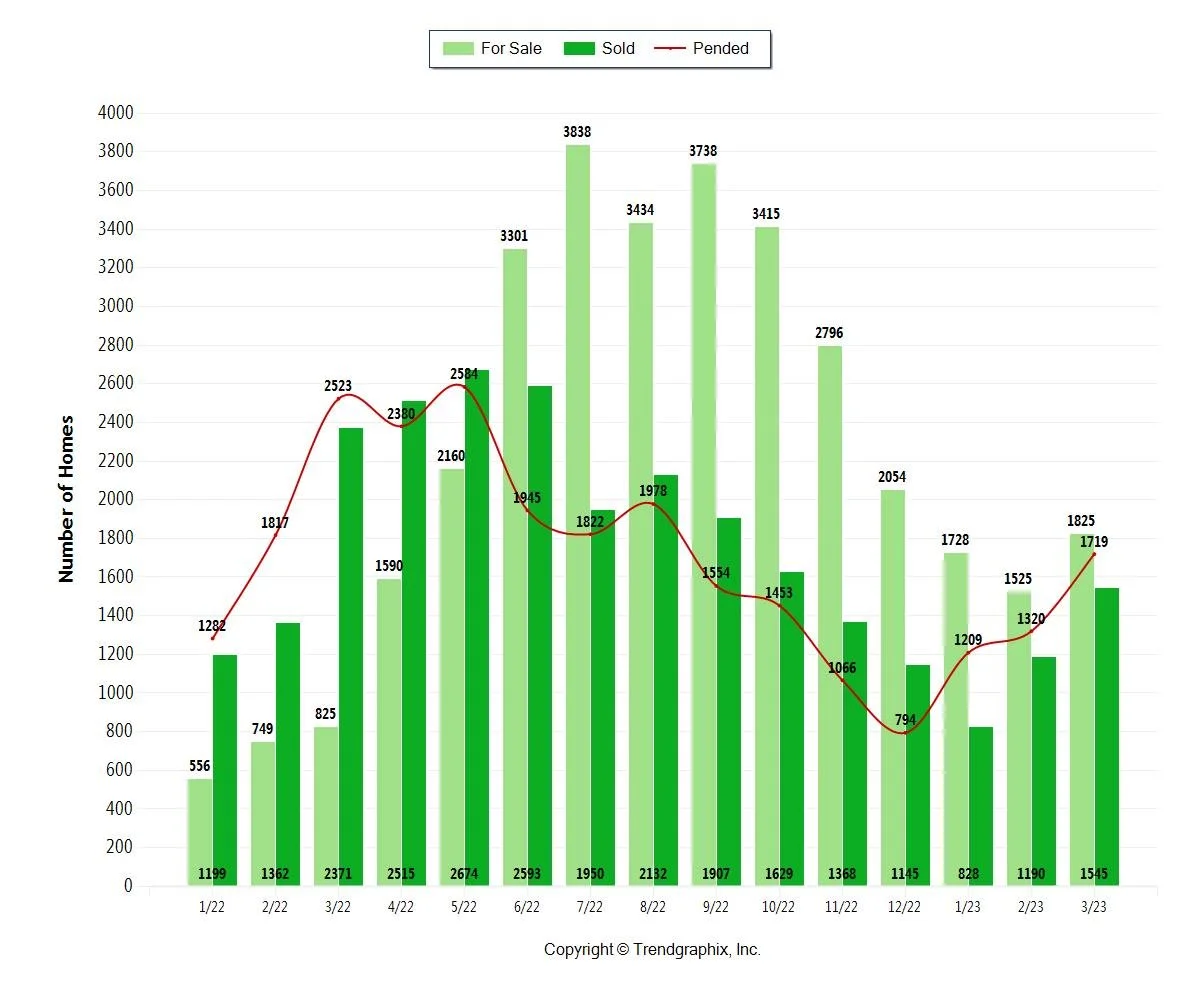Anticipating 2023 The Homebuyers Market
The "Spring Sales Surge" has historically been a reliable indicator of increased listings and sales in the real estate market, providing homebuyers with a clear season to make their move.
On Tuesday, March 28 2023, the much-anticipated report by S&P/Case-Shiller was released median home price trends for the region (King, Snohomish, Pierce, and Kitsap County for single-family resales only) as of January 2023, and it has caused negative of media attention around the current state of the real estate market. It confirms that the Seattle Metro Area is continuing to show softening in home values, and likely trailing only San Francisco for the steepest correction in the U.S. (Seattle was previously noted for having the “fastest-cooling home values”). In fairness, San Francisco, San Diego, and Seattle had seen the fastest rising median home prices during the past four to five years, so these regions had the furthest to fall.
This is where it becomes important to separate the headlines from the trendlines. A Realogics Sotheby’s International Realty global real estae advisor said, “I wouldn’t want to be a buyer in the hottest market”. So let’s approach this with perspective. Don’t miss the silver lining for savvy homebuyers and real estate advisors that know how to lead the way. The Case-Shiller price index lags by 60 days, and it appears from the activity RSIR brokers have seen is that the bottom of the market has passed.
The following graph shows single-family homes in King County, which illustrates the noted decline in pending sales, and declining listings, as mortgage interest rates skyrocketed and both buyers and sellers pulled back from the market. For many, the chill in the air, and in the housing market, has extended from winter months into theseattleg season. Many would-be sellers are not impressed with buyer activity or current price trends, so they either deferred their listing to later, or opted to rent the property and tread water for a year or two awaiting higher prices. This explains the relatively shallow depth of listings that would otherwise be expected. (Agents have remarked how few new listings in most price points are coming to market in many neighborhoods.)
That said, the most motivated sellers remain in the market today, and buyers have an advantage through increased negotiation power and less competition, which is the opposite of where the market was through much of the pandemic-era sales surge.
While the economic news is sour these days and the Fed just raised the bank rate yet again, the reality is there’s a silver lining for those buyers that are able to see past the headlines and focus on the trendlines. Market pundits believe we are at the bottom of the housing cycle, resulting in the best opportunity secure a desired home and lock in a permanent benefit of a lower contract price, despite digesting the temporary impact of a higher mortgage interest rate.
Leading opinions, including senior analysis at UBS, the largest wealth management firm in the world, and supported with comments by Blackstone, the largest private real estate investor in the world, both confirmed the market fundamentals are pointing towards mortgage rates returning to the low 5% range with Consumer Price Index rates around 3%, by the end of 2023. In short, the Fed is currently using a sledgehammer to address inflation, and it’s working and perhaps too well, so it may even overcorrect if the U.S. is put into a recession. So the popular thought is this past bank rate increase may have been the last one in this cycle, or perhaps one more at 25-basis points increase during the next Fed meeting, but then a trend thereafter will be for lower rates. Once that trend starts, buyers that were on the sidelines will increasingly step in, and meanwhile, it’s felt that stocks will recover as well, increasing the confidence to buy.
Buying today is a little like lining up early before the Black Friday sale because we know there will be attractive homes available soon, and the savvy buyers will secure the best selection, at the best prices sooner than later. Once the headlines turnaround and highlight what’s occurring quietly already beneath the surface, there will be another buying spree. A closer look at the “pending dip” immediately following the March 23, 2020 “Stay Home, Stay Safe” decree by Governor Jay Inslee to address the COVID-19 pandemic, illustrates how buyers can recoil but then spring back quickly, as they did by the summer of 2020—effectively delaying the spring sales season to a summer sales season in 2020. The same may be true in 2023, as the same pending dip was caused this time by the Fed bank rate increases, which started to impact the trajectory of sales by June 2023, and caused a slowing thereafter until recently, when it appears the tension is being released, pending sales are picking up, and the market is incubating a propensity for a slower start to the spring sales season but sustaining well into the summer as the media headlines play catch up.
For its part, Realogics Sotheby’s International Realty has been forecasting a spring sales surge, and supporting sellers and buyers ready to advantage of the moment through broker guidance built on their highest return, and events that encourage buyers to see what’s available on the market now. Over the weekend, the brokerage held its inaugural “Paint the Town Blue” progressive open house event, to steller turnout. One home saw as many as 100 interested buyers take a tour, while others are expecting offers as a result of the open houses they held. The event both encouraged sellers to get their home on the market amid peak interest, as well as encouraged buyers who may have been weary of conditions to see what’s available in the communities they care about.
It is abundantly clear that the Seattle area, and much of the nation, is suffering from a lack of available housing inventory. This is a stark contrast to the Great Recession period, during which there was a surplus of new supply and an abundance of distressed properties due to the high number of homebuyers who were unable to afford their homes. These individuals should not have qualified for a mortgage in the first place. Adding to the current housing crisis are the challenges faced by lenders and bank failures, as well as tighter guidelines on construction debt. As a result, fewer builders are willing or able to construct new homes. Unfortunately, this shortage of available housing comes at a time when interest rates are expected to decrease, leading to an influx of renters seeking to become homebuyers. The result is a severe imbalance of supply and demand, which will inevitably lead to higher prices.



